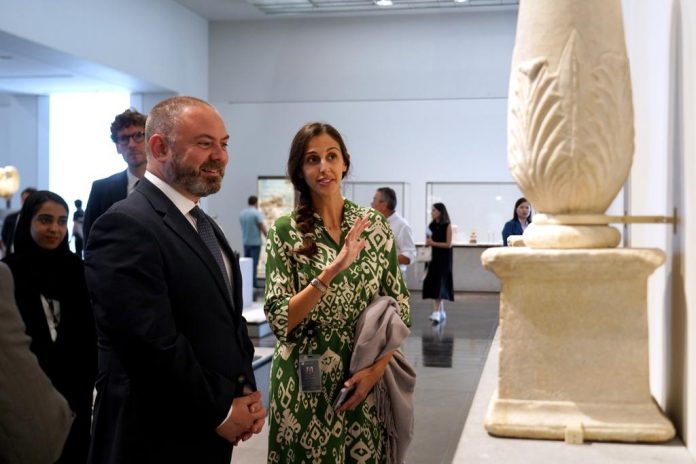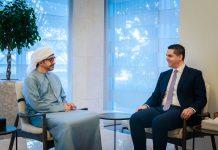The two famous Cippis that were discovered in Malta centuries ago and that had been separated when one of the Cippis was sent to France by the Grand Master de Rohan, were reunited after 241 years, through an exhibition at the Louvre Abu museum Dhabi in the United Arab Emirates.
The Cippi go back to the second century before Christ. The Minister for National Heritage, Arts and Local Government Owen Bonnici visited the exhibition at the Louvre Museum in Abu Dhabi. He said that apart from their great value from an aesthetic and historical point of view, these two artefacts are a symbol of deciphering languages and diplomatic relations. “This exhibition offers a rare opportunity to see these artefacts up close and makes the visitor’s experience more fascinating and complete,” said Minister Bonnici.

It is not known with certainty when the Cippi were discovered, but they were mentioned for the first time in 1694 as part of the collection of Đan Franġisk Abela. At that time, the Phoenician language had not yet been fully deciphered. Copies of the inscriptions were sent abroad and among the many scholars who worked on them, Abbot Jean-Jacques Barthélemy from the Académie des Inscriptions et Belle-Lettres in Paris managed to uncover the code of the Phoenician language in 1758.
The Cippi thus became known throughout the world and, as a show of recognition, the Grand Master de Rohan sent Cippus from them to the Académie in 1782. This was taken at the Louvre in Paris in 1864. The other Cippus is kept in the National Museum of Archeology in Valletta. The two museums have lent their respective Cippus to be exhibited in a temporary exhibition being held at the Louvre Abu Dhabi museum. This exhibition is being staged on the initiative of the Embassy of Malta in the United Arab Emirates, to commemorate the 50th anniversary of the beginning of diplomatic relations between Malta and the Emirates.










